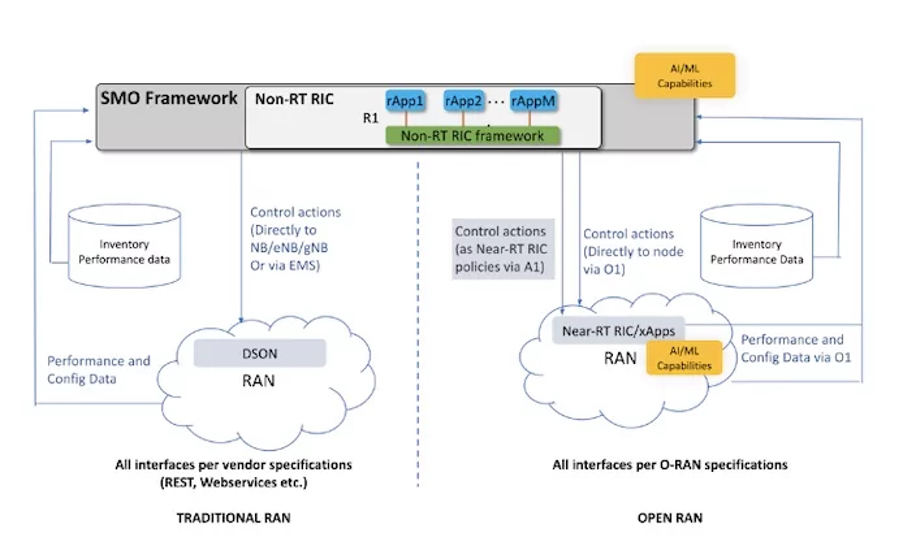Mobile operators account for 2 to 3% of the world’s energy consumption, and RAN accounts for 70-90% within that
Mobile networks’ energy costs are conservatively estimated at more than $25 billion annually; 70-90% of them are incurred in the RAN, some $17.5billion to $22.5 billion.
ONF’s SMaRT-5G project intends to develop and demonstrate open source solutions to save energy, driven by machine learning. Initial collaborators include Intel, META and TIP, Rimedo Labs and Rutgers WINLAB. It is inviting more participants to join.
If the SMaRT-5G project could just generate 8% annual savings, that would translate to at least between $1.4 billion and $1.8 billion, but the real emphasis is to reduce operators’ carbon footprint which accounts for 2 to 3% of all energy consumption.
The ONF SMaRT-5G initiative will build a series of proofs of concept (PoC) to demonstrate energy savings techniques for open source RAN stacks and commercial-grade RAN configurations.
The PoCs will be carried out in a phased series so that mobile operators start using the outcomes from each on open RAN solutions and traditional architectures more quickly.
Approaches to saving energy
The O-RAN RIC-based architecture is suited to supporting energy saving solutions – see the SMaRT-5G Project White Paper.
The first PoC will demonstrate switching a cell off and on to optimise traffic. It will also showcase MIMO Sleep and RF Channel Switch On/Off based on traffic flow.
The project intends to go further than RAN vendors’ distributed self-organising network (DSON) for traditional RANs, providing capabilities enabled by an holistic view of the RAN within a geographic area. They could include load-based cell sleep and wake-up, intelligent automated configuration of cell sleep and wake-up thresholds, closed control-loop that self-optimise, based on user experience and more.
Figure 1: RAN energy saving using O-RAN Architecture to support traditional and open RANs

Source: ONF
Later PoCs will explore advanced sleep mode (ASM) and ONF is considering other approaches to energy saving approaches for the core and compute infrastructure supporting the RAN and core.
Check out the SMaRT-5G Project White Paper and it join the inititiave, complete this form.


